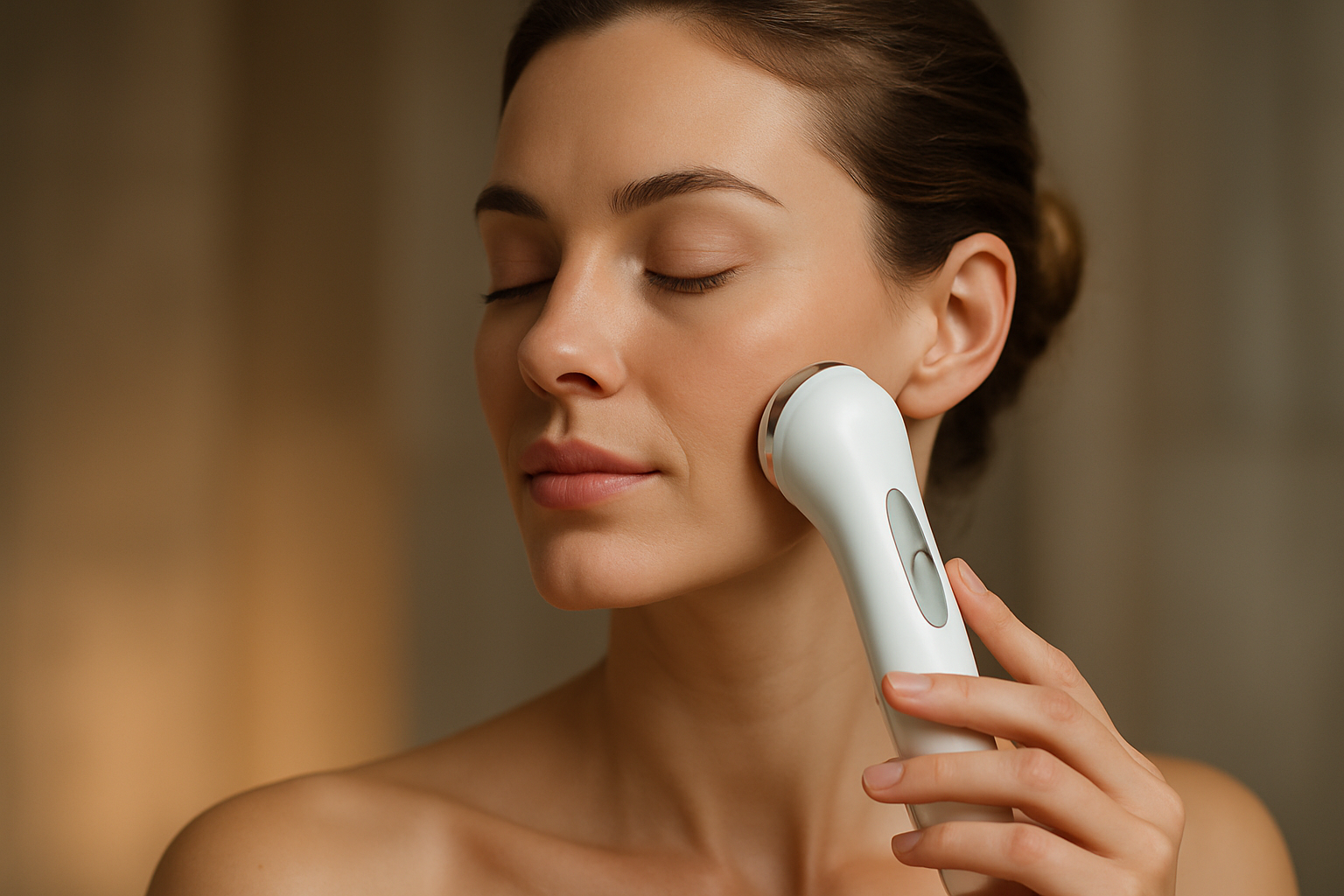Sonic Facials: The Next Wave in Skincare
In the ever-evolving world of beauty and skincare, a groundbreaking treatment is making waves - quite literally. Sonic facials, a cutting-edge approach to skincare, are revolutionizing how we think about facial treatments. This innovative technique harnesses the power of sound waves to penetrate deep into the skin, promising a range of benefits from improved circulation to enhanced product absorption. As beauty enthusiasts and skincare professionals alike turn their attention to this new frontier, sonic facials are poised to become the next big thing in the pursuit of radiant, healthy skin. Let's dive into the science, benefits, and growing popularity of this sonic sensation.

The technology behind sonic facials is rooted in the principles of sonophoresis, a technique that has been used in medical fields for decades to enhance drug delivery through the skin. In the context of skincare, this same principle is applied to increase the absorption and efficacy of topical products.
Unlike traditional facial treatments that work primarily on the surface of the skin, sonic facials can reach deeper layers, potentially offering more profound and long-lasting results. The gentle yet effective nature of sound waves makes this treatment suitable for various skin types, including sensitive skin that may not tolerate more aggressive treatments.
Benefits and Effectiveness
The purported benefits of sonic facials are numerous and wide-ranging. One of the primary advantages is the enhanced absorption of skincare products. The vibrations created by the sound waves temporarily disrupt the skin barrier, allowing active ingredients to penetrate more deeply and effectively. This can lead to improved efficacy of serums, moisturizers, and other topical treatments.
Improved circulation is another key benefit. The stimulation provided by sonic waves increases blood flow to the facial tissues, which can result in a healthier, more radiant complexion. This increased circulation also aids in the delivery of oxygen and nutrients to skin cells, promoting overall skin health.
Collagen production, a crucial factor in maintaining skin elasticity and firmness, is also thought to be boosted by sonic facial treatments. The vibrational energy may stimulate fibroblasts, the cells responsible for producing collagen and elastin, potentially leading to firmer, more youthful-looking skin over time.
Additionally, sonic facials are believed to aid in lymphatic drainage, helping to reduce puffiness and promote a more contoured appearance. The gentle massage-like effect of the sound waves can help move excess fluid and toxins away from facial tissues, resulting in a more refined and sculpted look.
The Treatment Process
A typical sonic facial session begins with thorough cleansing of the skin to remove any makeup, dirt, or oils. This ensures that the sound waves can penetrate effectively and that any products used during the treatment can be absorbed optimally.
The practitioner then applies a conductive gel or serum to the skin. This not only helps the sonic device glide smoothly over the skin but also acts as a medium for the sound waves to travel through. The choice of product can be tailored to address specific skin concerns, such as hydration, anti-aging, or brightening.
Next, the sonic device is moved over the face in specific patterns designed to target different areas and concerns. The treatment is generally painless and often described as relaxing, with many clients reporting a gentle warming sensation as the device moves across their skin.
The duration of a sonic facial can vary but typically ranges from 30 to 60 minutes. Some practitioners may combine sonic technology with other modalities, such as LED light therapy or traditional massage techniques, to enhance the overall results.
Industry Impact and Market Trends
The introduction of sonic facial technology is causing ripples throughout the beauty and skincare industry. As consumers become more educated about skincare and seek out advanced, science-backed treatments, sonic facials are positioning themselves as a bridge between traditional facials and more invasive procedures.
Many high-end spas and dermatology clinics are adding sonic facial treatments to their service menus, recognizing the growing demand for non-invasive yet effective skincare solutions. This trend is also influencing the at-home beauty device market, with several companies developing handheld sonic facial devices for personal use.
The global market for beauty devices, including sonic facial tools, is projected to grow significantly in the coming years. This growth is driven by factors such as increasing consumer awareness, technological advancements, and a growing preference for non-invasive beauty treatments.
Expert Opinions and Clinical Evidence
While anecdotal evidence and client satisfaction reports are abundant, clinical studies on the efficacy of sonic facials are still in their early stages. However, preliminary research shows promising results. A study published in the Journal of Cosmetic Dermatology found that ultrasound technology similar to that used in sonic facials improved the penetration of topical vitamin C, leading to enhanced antioxidant effects in the skin.
Dermatologists and skincare professionals are cautiously optimistic about the potential of sonic facials. Dr. Emily Cheng, a board-certified dermatologist, notes, “The science behind sonic facials is sound, and we’ve seen similar principles applied successfully in other medical fields. While more long-term studies are needed, the initial results and patient feedback are very encouraging.”
Considerations and Contraindications
As with any skincare treatment, sonic facials may not be suitable for everyone. Individuals with certain skin conditions, such as active acne, rosacea, or open wounds, should consult with a dermatologist before undergoing treatment. Additionally, those with metal implants in the face or neck area should exercise caution, as the sound waves could potentially interact with these implants.
It’s also important to note that while sonic facials are generally gentle, overuse or improper application could potentially lead to skin irritation or sensitivity. As such, it’s crucial to follow the guidance of trained professionals and adhere to recommended treatment frequencies.
As sonic facials continue to gain popularity, they represent an exciting frontier in the world of skincare. By harnessing the power of sound waves, this innovative treatment offers a non-invasive approach to addressing a variety of skin concerns. While further research is needed to fully understand its long-term effects and optimal applications, sonic facials are already making a significant impact on the beauty industry and skincare routines worldwide. As technology continues to advance and more clinical evidence emerges, we can expect to see this treatment evolve and potentially become a staple in the pursuit of healthy, radiant skin.




